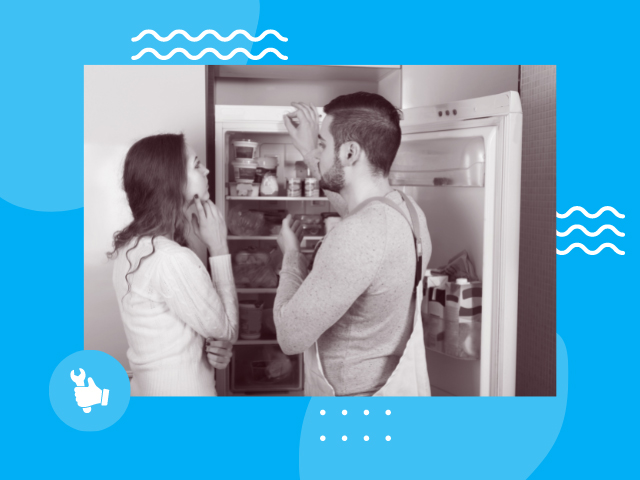Cold temperatures keep food fresher for longer. The main principle behind refrigeration is to slow down the action of bacteria (which is present in all food) so that the germs take longer to destroy the food.
Bacteria, for example, will ruin milk in two or three hours if it is left out on the kitchen counter at ambient temperature. However, by lowering the temperature of the milk, it will keep fresh for a week or two longer since the chilly temperature inside the refrigerator significantly reduces the activity of the bacteria. By refrigerating the milk, you may completely eliminate microorganisms and store it for months.
Because bacteria proliferate so quickly in unrefrigerated food, allowing it to defrost at room temperature is plain hazardous. Some organisms can produce poisons that will survive the cooking process even if the meal is cooked to temperatures that kill the bacteria.
Simply keeping food in the healthful 32- to 40-degree Fahrenheit range may make a world of difference in your health. It entails being able to consume meat safely within a few hours of purchase. It enables the preservation of fresh food as well as the enjoyment of leftovers. Longer safe-consumption intervals are healthier for your household’s finances.
Even though refrigerators were built to help us preserve our food cool and fresh and to withstand heavy-duty use, defects are still inevitable since they are not made to last longer. Oftentimes you may find out that your refrigerator is making noise because of a variety of reasons. On the other hand, they also break down eventually due to neglect in maintaining them regularly.
Additional, normal wear and tear do happen most of the time, especially when your refrigerator has served you for many years already. One problem to look out for is when your refrigerator is making noise since it is a sign of a major internal defect. And here are some of the most common reasons why your refrigerator is not cooling and when you should book Kenmore refrigerator repair services.
The power source switched off or unplugged
If your refrigerator isn’t chilling, make sure it’s still plugged in and that the switch that powers your kitchen appliances hasn’t been turned off at the breaker box. Check the power supply if you open your refrigerator and the light does not turn on, or the refrigerator does not cool.
The thermostat is not set properly
For maximum performance, keep your refrigerator temperature between 32ºF and 40ºF. If your refrigerator stops cooling, check to see if your thermostat is set within that range. Depending on where your refrigerator’s thermostat is located, it might be simple for little children to modify the settings by accident or for food items to knock against the switch.
Blocked vents
Refrigerators require adequate ventilation to function effectively. If your refrigerator isn’t cooling, it’s possible that food has clogged the vents in the fridge and/or freezer sections. Overfilling your fridge with food can cause objects to become lodged in the vents, preventing cold air from moving correctly. Organize your refrigerator to allow for optimal ventilation and move any things that may be blocking the vents. Your freezer vent may be iced over less frequently. In this scenario, you should remove the ice.
Dirty condenser coils
Your refrigerator’s condenser coils may accumulate dust, grime, and other particles over time. These coils, which are usually found on the bottom or back of your refrigerator, can become clogged with pet hair or dust. Blocked coils can make it more difficult to discharge heat from your refrigerator and may cause the compressor to work harder than necessary. To help avoid this problem, clean your coils every 2-3 months if the atmosphere surrounding your refrigerator is unusually oily or dusty or if your home has a lot of pet traffic.
Dirty or faulty gasket
The soft, flexible seals located on the inside of your refrigerator door (gaskets) can become dusty or worn over time, preventing them from properly closing your fridge. The gaskets prohibit cold air from escaping and maintain it within the refrigerator compartment. If you see chilly air escaping from your refrigerator, wipe the gaskets and edges with a sponge and warm, soapy water.
If, after cleaning your gaskets, air continues to leak and your fridge is still not chilling, schedule service to have a technician determine whether new gaskets are required.
Should these problems occur, you may contact Kenmore Best Appliance Repair Pro right away to book premium quality services.
The Experts to Call
No need to worry anymore about your refrigerator that’s not working. Our experts here will help you fix the issue, so you do not have to worry about fixing the latter on your own. Book with us now by calling us here at your most convenient time.
